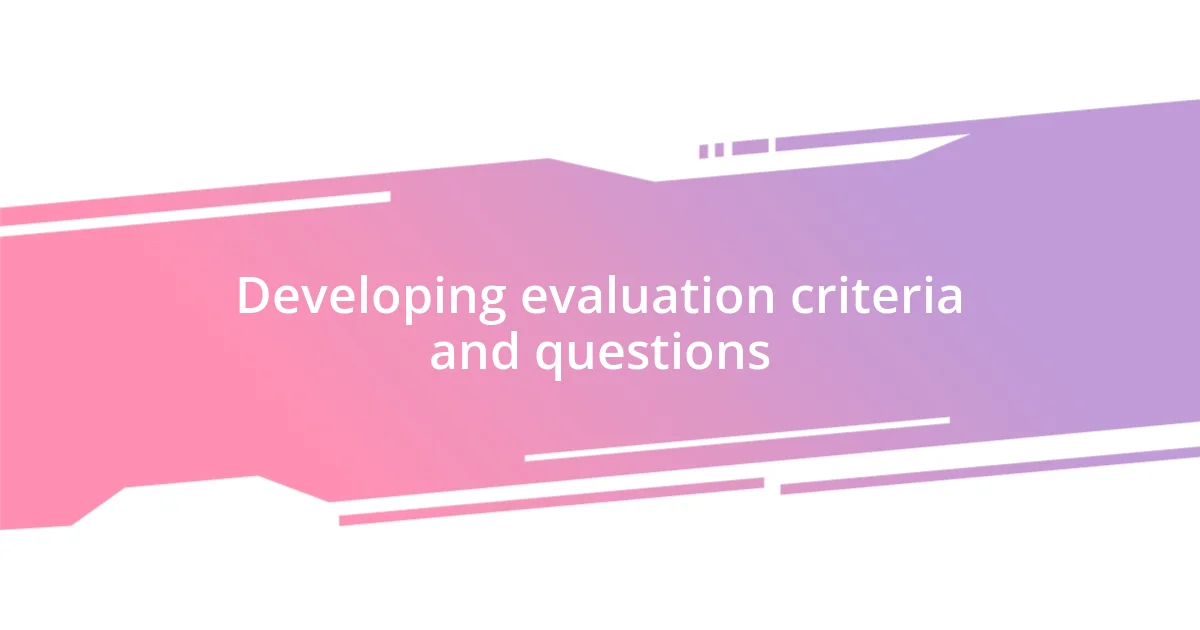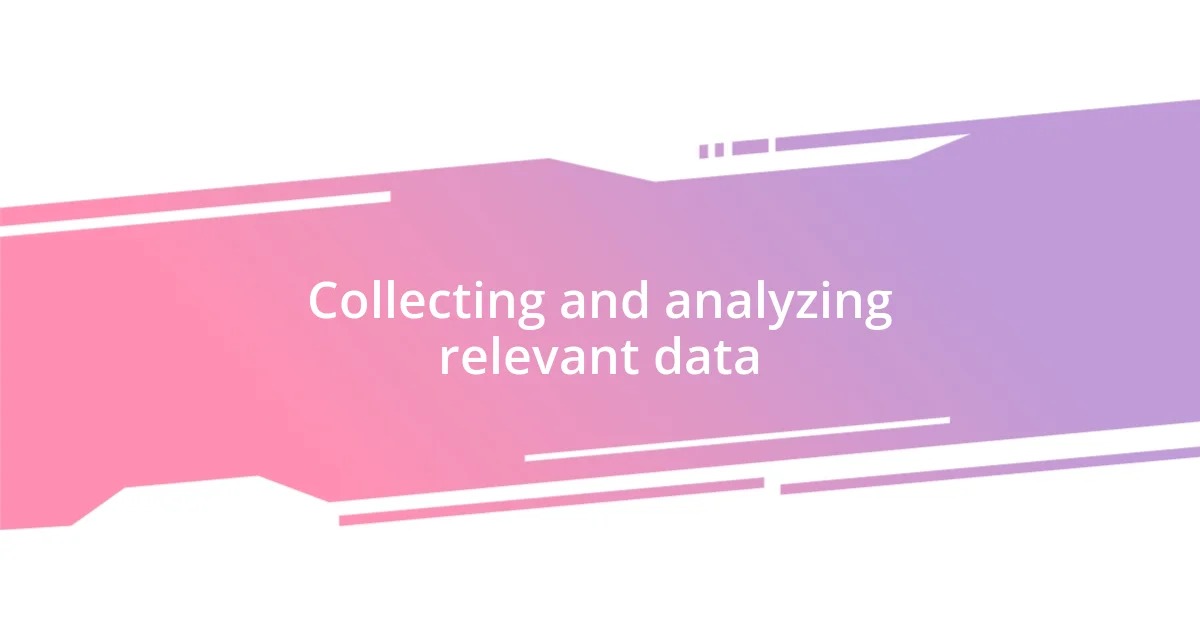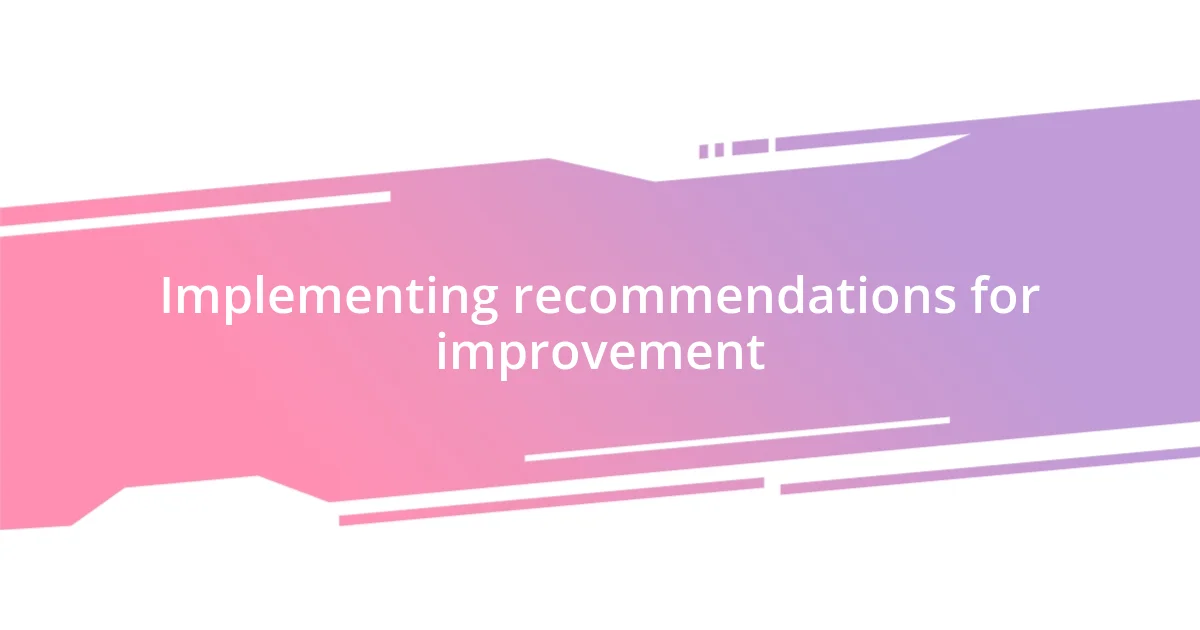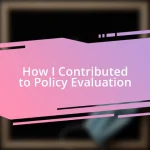Key takeaways not available due to an error.

Understanding policy evaluation principles
Understanding policy evaluation principles is crucial for anyone involved in shaping public policies. I remember working on a community health initiative where we needed to determine if our efforts were truly making a difference. This experience highlighted the importance of clear evaluation criteria; if we didn’t set specific benchmarks, how would we know if we were succeeding or just spinning our wheels?
One fundamental principle I often reflect on is the need for objectivity in evaluation. During a project assessing a local education policy, I was initially swayed by my personal beliefs about how effective the program was. But I learned that separating my emotions from the data was vital for an unbiased evaluation. Have you ever found yourself too emotionally invested in a project? It’s a common challenge, but embracing objectivity allows for honest appraisals that can lead to genuine improvements.
Additionally, understanding stakeholder perspectives is essential. While working in a policy think tank, I frequently engaged with community members whose voices were often overlooked. Their insights reminded me that evaluation is not just about numbers; it’s about real lives and experiences. How can we make sound policy decisions without truly listening? The principles of policy evaluation must include this empathetic approach to ensure our assessments are comprehensive and meaningful.

Identifying key stakeholders in evaluation
Identifying key stakeholders in evaluation is a pivotal step that shapes the entire process. I recall a project where engaging local business owners was crucial for understanding the economic implications of a new policy. Their perspectives not only enriched our evaluation but also fostered a sense of ownership and collaboration that was invaluable. Stakeholders can often bring to light concerns or insights that someone from a top-down perspective might miss, reminding us that evaluations should be inclusive and multifaceted.
Here are some key stakeholders to consider during the evaluation process:
- Policy Makers: They provide the framework and vision for the policy.
- Program Implementers: These are the individuals executing the policy on the ground; their insights are vital.
- Beneficiaries: Real people affected by the policy—listening to their experiences can offer crucial data.
- Community Organizations: They often have established relationships within the community and can help in gathering feedback.
- Academics and Researchers: They can offer valuable methodologies and theoretical frameworks to guide the evaluation.
- Funders: Their expectations and requirements can shape how evaluation is conducted.

Developing evaluation criteria and questions
I’m excited to dive into developing evaluation criteria and questions, as it’s such an essential component of policy evaluation. When I worked on an initiative focused on youth employment, I quickly learned that setting clear evaluation criteria helped streamline the process. By identifying what success looked like from the very beginning, we could frame our questions strategically. For example, instead of asking if participants felt the program was helpful, we probed deeper: “Did the program increase job placements within six months?” This shift made all the difference.
Crafting evaluation questions is not just about the technical aspects; it also requires understanding the values of the community involved. I vividly remember a time when a proposed question felt right on paper, but it missed the emotional context of our stakeholders. After engaging with participants in a focus group, I realized that a question like, “How did participating in this program change your outlook on the future?” resonated more deeply. Listening to their stories brought clarity to the criteria and opened up unexpected avenues of data that we wouldn’t have captured otherwise.
Ultimately, the balance between qualitative and quantitative evaluation criteria can drive robust discussions. I recall a project where we mixed numerical indicators with personal testimonies, leading to a richer evaluation. When program participants shared their narratives alongside statistical outcomes, we created a compelling story that went beyond graphs and charts. It emphasized that behind every number is a human experience—a narrative that enhances understanding and guides future policy adjustments.
| Type of Evaluation Criteria | Example Questions |
|---|---|
| Quantitative | What percentage of participants found employment after the program? |
| Qualitative | How did this program impact your day-to-day life? |

Collecting and analyzing relevant data
Collecting and analyzing relevant data is where the real magic happens in policy evaluation. I remember analyzing survey results from a community health initiative I was involved in. The numbers were compelling, but they only told part of the story. I found myself sifting through qualitative feedback, uncovering powerful narratives that painted a vivid picture of people’s lived experiences. This blend of data not only enriched our evaluation but also allowed us to address the complexities of the issue at hand.
Diving deep into the data can sometimes be overwhelming, but that’s where the opportunity lies. As I parsed through countless responses, patterns suddenly emerged that I hadn’t anticipated. For instance, I noticed that participants from varying socioeconomic backgrounds reported distinct challenges, highlighting the need for tailored solutions. It was a reminder that data is not just a collection of facts; it’s a voice that speaks if you are willing to listen carefully. I often reflect on how tuning into these nuances became a pivotal part of our policy recommendations.
Effective data collection can often hinge on the methods we choose. I had a particularly enlightening experience using mixed methods in one evaluation. While the quantitative data laid the groundwork, carrying out interviews with a diverse group of stakeholders added contextual richness. I still think back to a heartfelt conversation with a single mother who articulated how access to health services transformed her family’s quality of life. Her story, intertwined with the cold hard numbers, painted a far more complete picture and guided us in framing our final policy suggestions. How often do we let personal stories shape our understanding of data? It’s essential to keep this perspective in mind.

Communicating findings to stakeholders
Effective communication of findings to stakeholders can dramatically influence the trajectory of policy decisions. In one instance, after completing an evaluation for a housing program, I organized a casual presentation with the stakeholders involved. I remember their faces lighting up as I shared not just the statistics but also personal stories from program recipients. These narratives bridged the gap between numbers and real lives, highlighting the impact of our work in a way that pure data never could.
Understanding your audience is crucial in this process. During a meeting with government officials, I noticed that many were initially disengaged. To counter this, I shifted my approach, focusing on storytelling rather than just presenting graphs. I vividly recall explaining how a single mother’s experience in our program—finding stable housing and employment—was more than an isolated statistic; it represented a significant social change. I saw nods of acknowledgment in the room, as if they were connecting the dots of their own responsibilities to that story.
It’s essential to leave stakeholders with not just findings, but a call to action that resonates. After a comprehensive evaluation of a youth literacy program, I facilitated a workshop where we brainstormed actionable steps together. I encouraged them to share their perspectives on the data presented, leading to a collaborative mindset. Reflecting on that experience, I realized that when stakeholders feel like active participants in interpreting findings, they often leave motivated and ready to implement necessary changes. Doesn’t it feel empowering when you’re part of something larger than yourself? That’s the effect we can create through meaningful communication.

Implementing recommendations for improvement
Implementing recommendations for improvement can sometimes feel like stepping into uncharted territory. I vividly remember when we rolled out a new training program for social workers based on evaluation findings. It was thrilling to see the enthusiasm among the staff, yet there was an underlying tension as they grappled with changing practices. I found that facilitating open discussions about their concerns not only reassured them but also sparked innovative ideas that enhanced our implementation strategy.
As I worked closely with local agencies to put changes into action, I discovered the vital role of ongoing support. In one instance, after launching an updated client engagement process, I held weekly check-ins to gauge progress. These meetings revealed unexpected challenges and allowed us to adapt in real-time. Seeing colleagues light up as they shared small victories was a reminder of why I love this work—each success, no matter how minor, brought us closer to our goals. Have you ever encountered a situation where your initial plan needed a tweak, only to find that the adjustment made all the difference?
Reflecting on past experiences, feedback loops proved essential to our journey of improvement. During a project on public health awareness, I initiated a series of surveys post-implementation to capture reactions from both staff and community members. The insights gained not only informed our next steps but also cultivated a culture of collaboration. It’s fascinating how simple acts like gathering feedback can foster a sense of ownership among team members. When individuals see their input shaping outcomes, it empowers them to embrace change and drive it forward. Who wouldn’t want to be part of that journey?

Assessing long-term impacts of changes
Assessing long-term impacts of changes requires a blend of quantitative and qualitative analysis to truly appreciate the nuances of a policy’s effectiveness. I recall an instance where we analyzed data five years after implementing a community health initiative. The cold hard numbers on reduced emergency room visits were impressive, but digging deeper revealed personal stories of families who now managed chronic conditions more effectively. Isn’t it fascinating how data can come alive through personal narratives?
It’s vital to remember that long-term assessment isn’t just a one-off process; it’s an ongoing journey. When we looked at the sustainability of a job training program, I organized follow-up interviews and surveys with past participants. I was moved by how they shared their evolving career paths—some had even started their own businesses! Engaging in these conversations underscored for me how policy can have a ripple effect over time, influencing lives in ways we may not have anticipated. Wouldn’t you agree that seeing this kind of growth reinforces the importance of thorough evaluation?
Through this iterative evaluation, I learned that involving stakeholders in the assessment process enhances credibility and buy-in. For example, I convened a group of program alumni to provide feedback on the long-term impacts they noticed, which not only empowered them but also enriched our data collection. It was inspiring to see them reflect on how the training shaped their trajectories, turning statistics into a tapestry of human experience. I often think—what if we could harness this collective wisdom regularly? It would not only inform future policies but also strengthen the community fabric.












